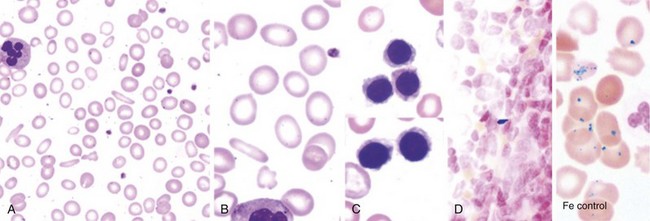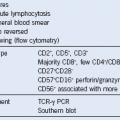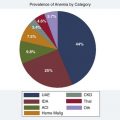Chapter 8 Disorders of Iron Homeostasis
Iron Deficiency and Overload
Plasma Ferritin Concentrations
Plasma ferritin concentrations are helpful in the detection of both iron deficiency and iron overload.1 Plasma ferritin concentrations decline with storage iron depletion; a plasma ferritin concentration less than 12 mg/L is virtually diagnostic of absence of iron stores. The only known conditions that may lower the plasma ferritin concentration independently of a decrease in iron stores are hypothyroidism and ascorbate deficiency, but these conditions only rarely cause problems in clinical interpretation. Increased plasma ferritin concentrations may indicate increased storage iron, but a number of disorders may increase the plasma ferritin level independently of the body iron store. Plasma ferritin is an acute-phase reactant with increased ferritin synthesis, a nonspecific response that is part of the general pattern of the systemic effects of inflammation.1,2 Thus, fever, acute infections, rheumatoid arthritis, and other chronic inflammatory disorders elevate the plasma ferritin concentration. Both acute and chronic damage to the liver, as well as to other ferritin-rich tissues, may increase plasma ferritin concentration through an inflammatory process or by releasing tissue ferritins from damaged parenchymal cells.1
Table 8-1 Causes of Iron Deficiency
| Increased Iron Requirements |
|---|
| Inadequate Iron Supply |
Iron Deficiency and Coexisting Disorders
Detection of iron deficiency in the presence of chronic infectious, inflammatory, or malignant disorders that increase plasma hepcidin is more problematic than in the absence of such disorders.2 Even if iron lack contributes to the anemia of chronic disorders, the increase in plasma hepcidin will lead to a fall in the transferrin concentration (or total iron-binding capacity) and an increase in the plasma ferritin concentration.2,3 Because the serum transferrin receptor concentration is less affected by inflammation, its measurement usually can determine whether iron stores are absent.4 If uncertainty remains, BM examination is definitive. If iron deficiency is present, iron stores are absent; if the anemia of chronic disorders alone is responsible, iron stores are present and typically increased.










